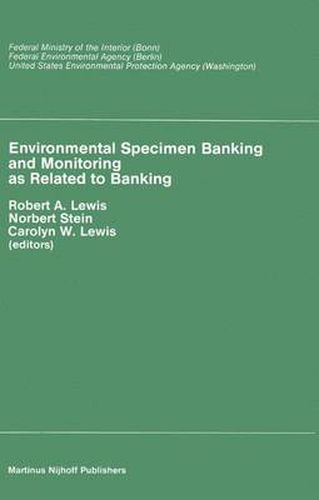Readings Newsletter
Become a Readings Member to make your shopping experience even easier.
Sign in or sign up for free!
You’re not far away from qualifying for FREE standard shipping within Australia
You’ve qualified for FREE standard shipping within Australia
The cart is loading…






This title is printed to order. This book may have been self-published. If so, we cannot guarantee the quality of the content. In the main most books will have gone through the editing process however some may not. We therefore suggest that you be aware of this before ordering this book. If in doubt check either the author or publisher’s details as we are unable to accept any returns unless they are faulty. Please contact us if you have any questions.
There is a great dispar.ity between the ability of the major industrial nations to produce and distribute chemicals and our ability to comprehend the nature and potential severity of unintended consequences for man, his life support systems and the environment generally. Furthermore, the gap between our ability to produce and distribute myriad chemicals and our ability to identify, understand or predict unfavorable environmental impacts may widen. As environmental scientists we are conscious of the interrelatedness, not only of environmental systems, but of nations as well. Materials are continually moved across boundaries by human as well as natural agencies. The extent, rate and nature of transfer for most pollutants is largely unknown. We can only guess which of the numerous chemicals produced are candidates for concern. More important still is our practical ignorance of the mechanisms of chronic effects upon natural systems and of the concentrations, combinations and circumstances that may lead to irreversibilities or to serious consequences for man. We know very little also regarding the potential for or the kinds of indirect effects that might occur. With respect to the environmentltself, we know little of its assimilative capacity with regard to widely dispersed pollutants and their transformation products. But what we do know is disquieting, and a much-improved system for the evaluation and management of toxic and hazardous chemicals is needed.
$9.00 standard shipping within Australia
FREE standard shipping within Australia for orders over $100.00
Express & International shipping calculated at checkout
This title is printed to order. This book may have been self-published. If so, we cannot guarantee the quality of the content. In the main most books will have gone through the editing process however some may not. We therefore suggest that you be aware of this before ordering this book. If in doubt check either the author or publisher’s details as we are unable to accept any returns unless they are faulty. Please contact us if you have any questions.
There is a great dispar.ity between the ability of the major industrial nations to produce and distribute chemicals and our ability to comprehend the nature and potential severity of unintended consequences for man, his life support systems and the environment generally. Furthermore, the gap between our ability to produce and distribute myriad chemicals and our ability to identify, understand or predict unfavorable environmental impacts may widen. As environmental scientists we are conscious of the interrelatedness, not only of environmental systems, but of nations as well. Materials are continually moved across boundaries by human as well as natural agencies. The extent, rate and nature of transfer for most pollutants is largely unknown. We can only guess which of the numerous chemicals produced are candidates for concern. More important still is our practical ignorance of the mechanisms of chronic effects upon natural systems and of the concentrations, combinations and circumstances that may lead to irreversibilities or to serious consequences for man. We know very little also regarding the potential for or the kinds of indirect effects that might occur. With respect to the environmentltself, we know little of its assimilative capacity with regard to widely dispersed pollutants and their transformation products. But what we do know is disquieting, and a much-improved system for the evaluation and management of toxic and hazardous chemicals is needed.